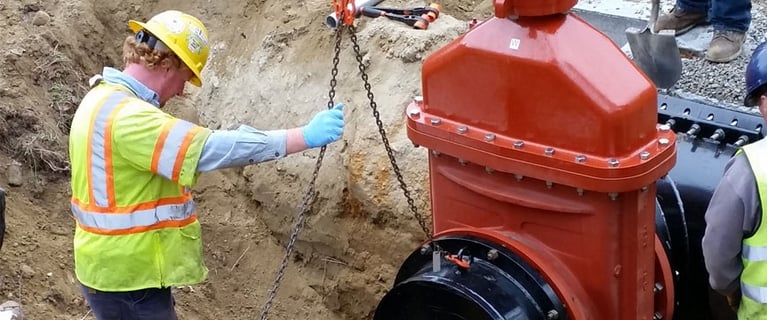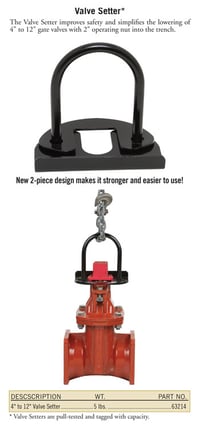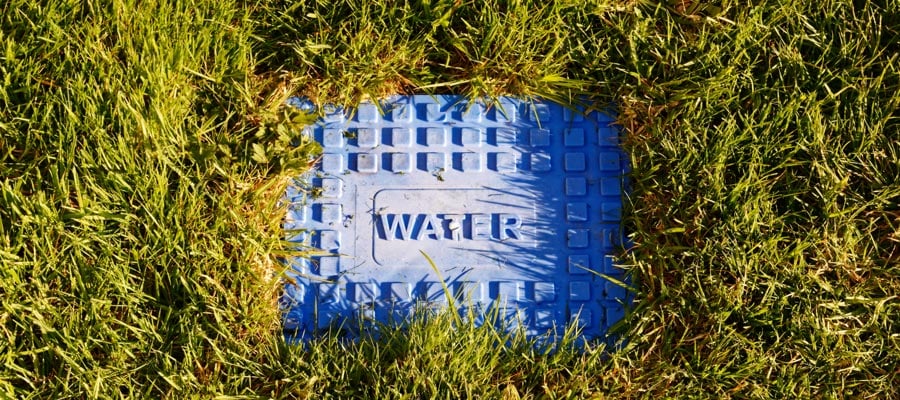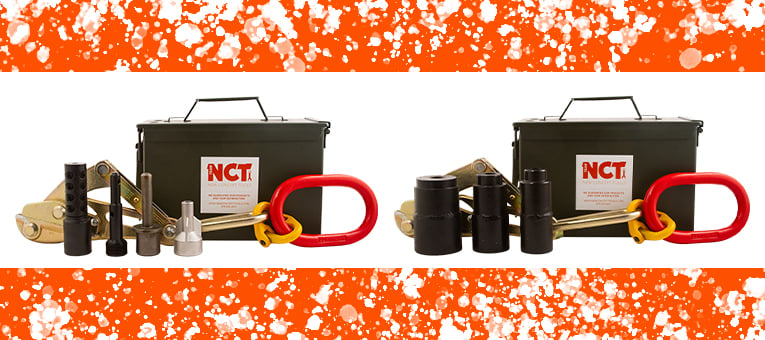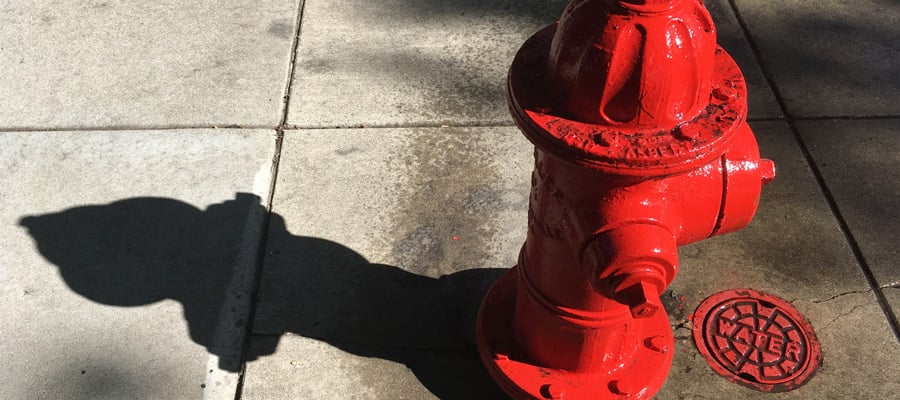How to Lift a Gate Valve Safely
If you've ever had to install or replace a gate valve, you know how heavy, bulky, and awkward they can be to move effectively. Adding insult to injury, waterworks employees often work in wet conditions, making the gate valve slippery and hard to grip. To avoid accidents that can cost your organization in terms of damaged materials, employee morale, worker's comp claims and legal problems, it's important to use safety precautions when lifting and installing gate valves. In this post, we'll discuss how to safely lift a gate valve into position to help avoid injuries and damage to the valve.
Valve Setter Product Video
The best way to safely lift a gate valve is to use mechanical assistance, in the form of a backhoe, forklift or similar device to move the valve straight up or down into position. But how do you ensure the valve will remain attached to the chain? This is one area where a small slip can damage the valve, costing your organization money for repair or replacement materials; in addition to any injury done to your workers in the process. Some may use a chain or strap to lift a gate valve, this leaves the installer to deal with awkward angles and risk of slippage or broken straps. This is the reason for difficult line up for installation on the pipe and risk of severe injury.
One solution that has been quite popular is a valve setter, which is attached at the valve nut and has a bar for lifting the valve safely and securely, minimizing the risk of damage or injury. Many municipalities we've worked with will use a valve setter to safely lift the gate valve into position. The valve setter securely slides and locks under the operating nut. It has a loop handle design to attach a lifting chain to easily lift and lower the valve with a minimum of tilting and turning. Best for valve 3" - 12". Make sure any lifting device you use is tested and tagged with lifting capacity.
If you just have no choice but to manually lift the gate valve, due to tight surroundings, lack of access or other concerns, make sure your workers are doing so safely. Dry off the valve as much as possible first, to help improve grip. Grip gloves can be used to help prevent slipping or dropping the valve by improving grip further. If possible, use a valve setter with a chain to a lifting bar or post to keep your people out of the excavation and on solid, dry ground, where multiple people can help lift the valve out, distributing its weight. Make sure your workers know to lift with their knees instead of their backs, and provide back braces where needed to provide extra support and prevent injuries.
Now that you know the proper procedure for getting a gate valve in place safely and without damage, it's important that you get the right tools for the job. Click here to view available options for our Valve Setter.
At New Concept Tools, we don't expect you to use makeshift tools to get the job done, which is why we design tools specifically for the waterworks and industrial sectors that are extensively field tested before they are offered for sale. Start browsing our Gate Valve Tools and Accessories to find the perfect tool to get the job done while meeting your specifications.

